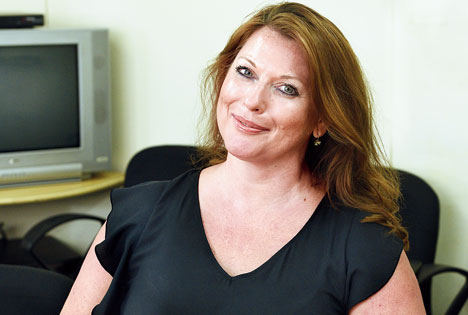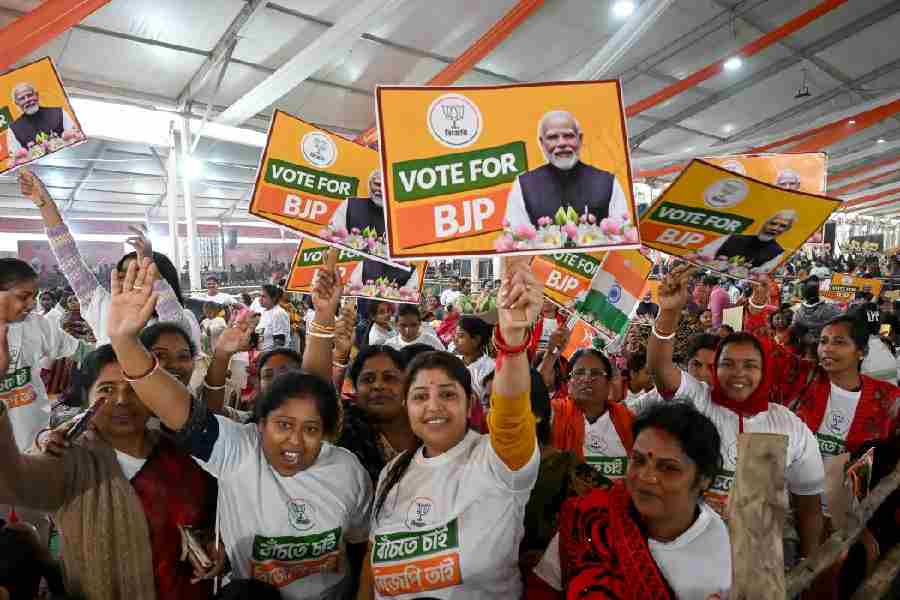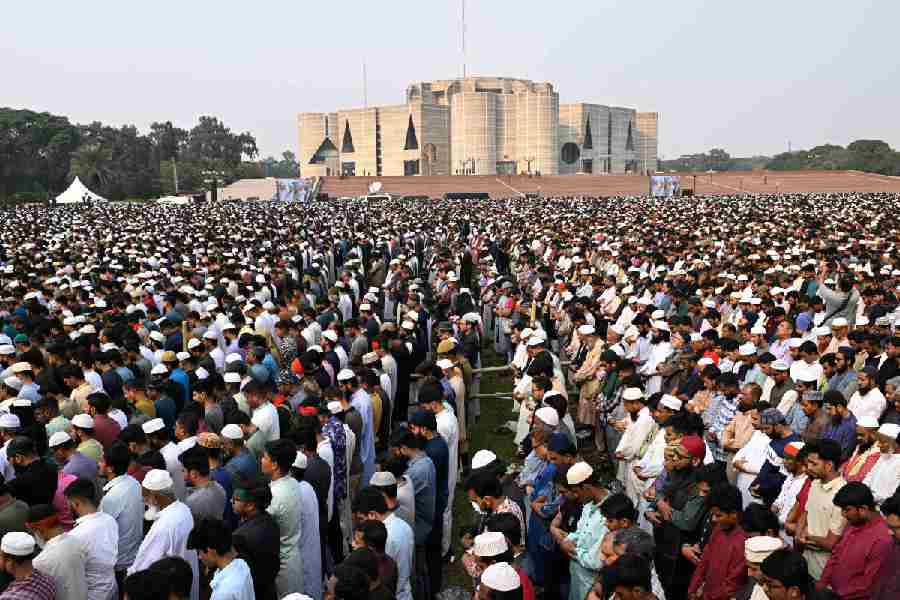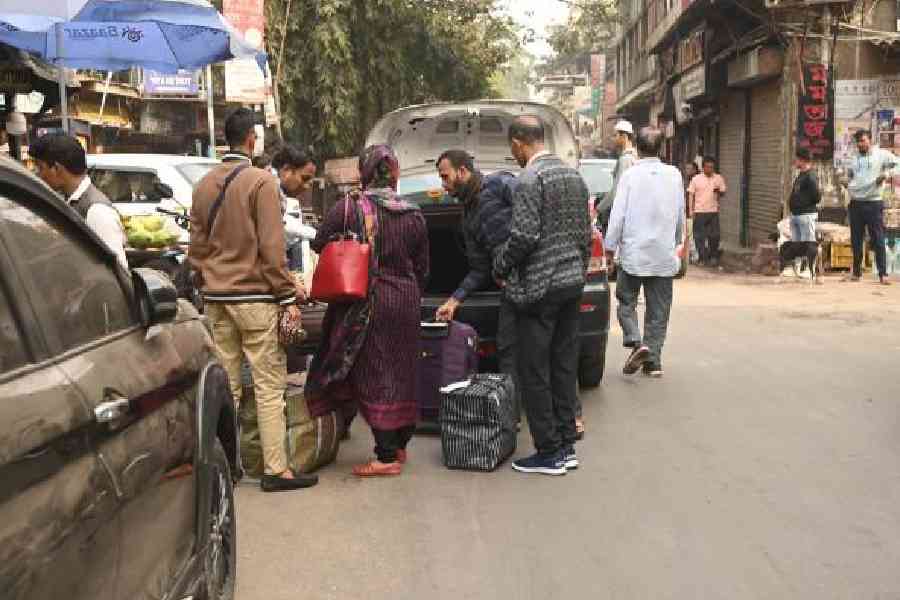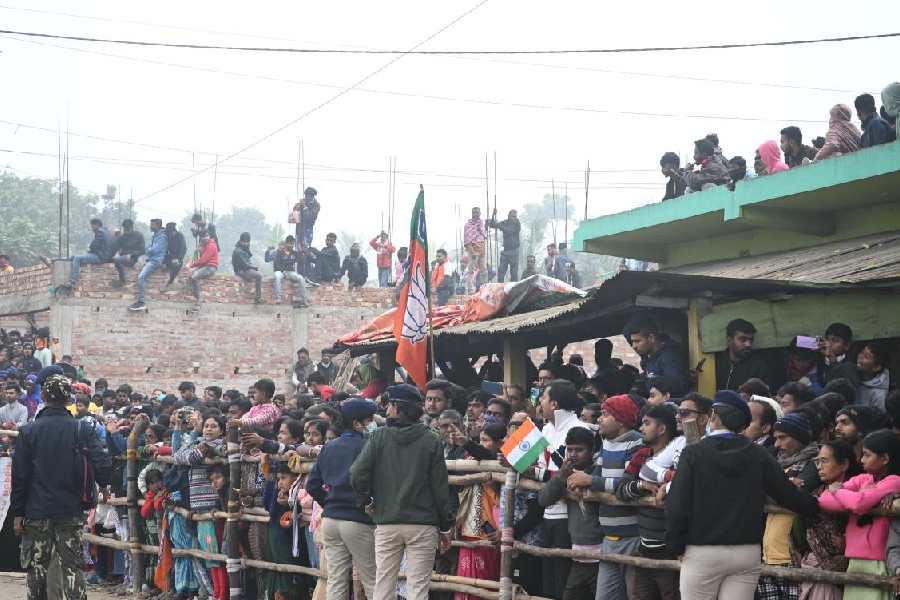
Last Wednesday, Meghan Markle finally walked down the wedding aisle, resplendent in a lacy, sparkling white dress. It was, of course, the Suits season finale, and she was marrying her on-show fiance. But it was also a mere three weeks or so before Meghan herself — biracial American, now former actress, divorcee, United Nations women’s advocate —will walk down the aisle in Windsor Castle to marry her real fiance, Prince Harry (beloved royal soldier and hellraiser turned mental health activist). That made for a digital frenzy about what may be coming, which is only going to grow as the days wind down.
After all, the drip-drip-drip of details has already sped up. The betting is closed. On what? The still outstanding question: What will she wear? There are economic and cultural repercussions riding on the answer. And you thought it was just a dress. Pshaw.
First, odds were on Ralph & Russo, makers of Meghan’s official engagement dress. Then Erdem Moralioglu. After all, he is a Canadian — Meghan lived in Toronto while she filmed Suits — who has become a stalwart of London Fashion Week, famous for his way with a romantic lace dress, and Meghan told Vanity Fair she had been wearing his clothes for years. Then Burberry became a favourite, because — well, Britishness. (It probably won’t be the Anne Barge “Versailles” gown Meghan wore in Suits, though that extravaganza did have a princess vibe.)
The answer won’t be certain until the bride appears on May 19, but what is increasingly clear is that whoever the designer is, he or she will be vaulted into the global conversation.
In today’s influencer culture, when an individual’s ability to ignite far-reaching trends simply by dint of her own appeal is more effective than any advertising campaign, and a photo can carry a message round the world more powerfully than any words, it is beginning to seem as if Meghan could be the most influential of all. Even though she has deleted all of her social media accounts.

Bigger than Kate
The numbers began to roll in almost as soon as Meghan appeared with Prince Harry at the Invictus Games in Toronto last September wearing ripped jeans from the California brand Mother and carrying an Everlane tote.
Mother saw a 200 per cent increase in traffic to its website, the company said, and a 60 per cent increase in Google searches compared to the same week the previous September. According to Lela Becker, the president and founder of Mother, the jeans sold out in three days and 400 people signed up on a wait list for a reorder. There was a day when the site saw more traffic than it does on Black Friday. At Everlane, there are more than 20,000 people on a wait list for the tote she carried, according to the company. When Michael Preysman, the Everlane founder and chief executive, was asked to come up with an equivalent celebrity, he said: “Angelina Jolie.”
The white wrap coat by the Canadian company Line the Label that Meghan wore for the engagement announcement sold out almost immediately, the brand said, and the website crashed. Traffic to the website of Birks, the Canadian jeweller responsible for the opal and gold stud earrings she was wearing in the same appearance, spiked 500 per cent, according to Birks, and does so each time she wears a Birks piece.
“We have had celebrities wear our pieces — Claire Foy, Serena Williams — but no one has ever matched the magnitude of the global response,” said Eva Hartling, the vice-president of Birks. “We’ve always had coverage in Canada,” Eva said, “but now we are in Vogue Japan, in Russia” and more.
When Meghan carried a Strathberry bag for her first official appearance after the engagement, it sold out in 11 minutes, and traffic to the Scottish company’s website rose 5,000 per cent. In January, she wore a pair of black jeans from Hiut Denim, a small Welsh brand, and in March the company moved to a bigger factory to fulfil demand.
Even in the context of the oddly enduring global fascination with royalty, the current appetite for happy endings at a time when the news often seems filled with unhappiness, and the romance of princes and princesses, the scale of the response is huge. Especially given that Meghan will never have the title princess attached to her name (the “overwhelming likelihood” is that her title will be Princess Henry of Wales, the BBC has reported, but not Princess Meghan), and that her husband is now sixth in line for the throne, following the birth of that other potential influencer, William and Kate’s baby No. 3.
That lesser status is why Brand Finance, a British consultancy that specialises in brand valuation (especially of intangible assets), originally projected that the wedding would be worth about £500 million in tourism and unofficial endorsements — a meaningful event, but not a phenomenon. But as soon as the report was issued, said David Haigh, the chief executive, “people went bananas. I don’t think I’ve ever seen a press release get more coverage”.
David began to revise his projections upward. Now, he believes, the wedding itself will have economic repercussions “closer to £1 billion — and to be honest, it could be more than that”. Meghan herself, he said, could contribute £150 million annually simply to British fashion in the form of unofficial endorsements. She “will quickly match or even surpass the Duchess of Cambridge in her incredible influence on the fashion industry,” he said.
And that’s just in Britain. In Canada, where Meghan lived for much of the seven years she spent filming the television show Suits, the fashion industry is also banking on her patronage — not just to raise the profile of local brands including Birks, Line the Label, Sentaler and Mackage, but of the local industry itself. If Sophie Gregoire Trudeau, the wife of the Canadian prime minister, Justin Trudeau, first brought the eyes of the world to Canadian fashion, Meghan has raised the focus exponentially.
“People globally are glued to her,” said Vicky Milner, the president of the Canadian Arts and Fashion Awards, who invited Meghan to award the International Canadian Designer of the Year prize in 2016. (It went to Jason Wu, the designer whose clothes Meghan continues to wear.) There are at least two blogs — ‘Meghan’s Mirror’ and ‘Mad About Meghan’ — devoted to chronicling her choices.
“When you have a figure like that, it changes everything for designers and the country when it comes to fashion,” Vicky said, noting that there had been a stereotype of Canadian fashion as significantly less creative or trendsetting than Paris or Milan, but that Meghan’s patronage could change all that. “For people to be able to see Canadian brands in a new light is huge.” The French-American designer Joseph Altuzarra, who started working with Meghan when she was in Suits, said her ability to alter perception of a brand is “less quantifiable, but arguably has a bigger impact’’ than her effect on sales.
She wore his pinstriped day dress to her first major event as a representative of the royal family, at the Commonwealth Youth Forum recently (website visits up 400 per cent, Instagrams up 300 per cent in the hours following, according to a spokeswoman for the brand). “We are not a millennial street style brand,” Joseph said. “We are a niche brand in a niche area. She changes how people think of us.”

The Obama Effect
There may not have been another public figure whose clothing choices were obsessed over to such an extent since Michelle Obama, who inspired a study by a New York University professor in the Harvard Business Review that analysed her effect on the fashion stock market. Indeed, since the Obamas left the White House, there has been something of a vacuum when it comes to a public figure consciously using fashion in a creative way to advance specific ideas, and ideals. Melania Trump has proved reluctant to engage consistently in strategic dressing, and Brigitte Macron, the first lady of France, has been notably loyal to French brands, especially Louis Vuitton. If Meghan has a role model for how to use her job as “wife of” to advance a broader agenda, it may be Michelle Obama. ‘We’ve seen that Meghan Markle is very considered in her choice of what she wears, and understands the soft power fashion can have in terms of connecting to a community, shining a light on local companies and using what you wear to challenge conventions,” said Caroline Rush, the chief executive of the British Fashion Council.
A random assortment of the brands Meghan has worn include some major British labels (Burberry, Alexander McQueen, Stella McCartney), but as a whole they range in price, profile and place of origin, and the majority come from smaller contemporary brands from across the Commonwealth (and the former colonies).
It is a description oddly reminiscent of Michelle’s fashion history, though in its particulars it reflects both Meghan’s own story and the anticipation that she and Prince Harry will be tasked with acting as “international ambassadors,’’ according to David Haigh; that in the shadow of Brexit, these royals cross borders, literally and symbolically. Also, perhaps, that Meghan stands for something more than simply aspiration — she stands for change. That may be expressed in clothes but goes far beyond it.
That’s the reason Time magazine included Meghan Markle and Prince Harry on its list of the 100 Most Influential people of 2018 (right next to President Trump), an acknowledgment of their decisions to support what may traditionally have seemed risky causes for a royal family — depression, women’s empowerment and L.G.B.T. rights. As Joseph Altuzarra points out, Meghan also “represents inclusivity”. If Catherine, Duchess of Cambridge, was the first commoner to wed a royal in 450 years, Meghan Markle represents the 21st century and its attitudes in multiple ways, including race and nationality. “Aside from the fairy tale, from a sociological standpoint she seems like a very modern woman, with an accessible idea of luxury that allows young women to identify with her as someone who makes her own choices,” said Jean-Christophe Bedos, the chief executive of Birks Group, which owns the Birks brand. (A friend of Meghan’s, the stylist Jessica Mulroney, reportedly helps her on an unofficial basis.)
“She’s less conventional than any of her potential royal peers,” Jean-Christophe said. She has been criticised because of it — there were complaints about the ripped jeans, the sheer dress, her messy bun, her penchant for wearing thumb rings — but also cheered. It has the effect of appealing to a different constituency. Think of it this way: Catherine wears the requisite sheer stockings when she appears in public. Meghan doesn’t. It’s a detail, but it’s telling.
“It all seems genuine,’’ Joseph Altuzarra said — which is, on the surface, an odd thing to say, but also important. We have gotten so used to being force-fed imagery — red carpet appearances, festival Instagrams — by celebrities who are paid or have formal relationships with brands that the idea of someone who is making her own choices with her own agenda, unfettered by financial obligation, has significantly more power. Fashion on its own gets you only so far; it’s the content and character the clothes represent that is the propulsion mechanism.
As the hype and hope and gossip continues to build, and the collective breath is held for whatever the big dress (or maybe it won’t be so big?) on the big day will be, that’s a lesson worth remembering.

THE MM EFFECT




ROYAL WEDDING FAQ
Who’s getting married?
Rachel Meghan Markle, aka Meghan Markle, an American actress best known for playing Rachel Zane in the long-running legal-intrigue drama Suits, is marrying Prince Henry Charles Albert David of Wales, aka Prince Harry.
When and where?
On May 19 at St. George’s Chapel in Windsor Castle. The ceremony will last about an hour.
Have the invitations gone out?
Yes. On March 22, invitations went out to the first 600 guests. The ink was American, the card stock was English and the invitations were printed by Barnard and Westwood.
Is there a dress code for guests?
Yes. According to the invitations, men are supposed to wear uniforms, morning coats or “lounge suits”, by which they mean, essentially, business suits. Women, meanwhile, are expected to wear “day dresses” and hats.
How do Kate and Meghan get along?
By all accounts, the soon-to-be sisters-in-law get along just fine. They’re neighbours at Kensington Palace and have appeared happily together on several occasions since Meghan and Harry’s engagement was announced.
The New York Times News Service
Whose style do you like better — Meghan Markle or the Duchess of Cambridge? Tell t2@abp.in

